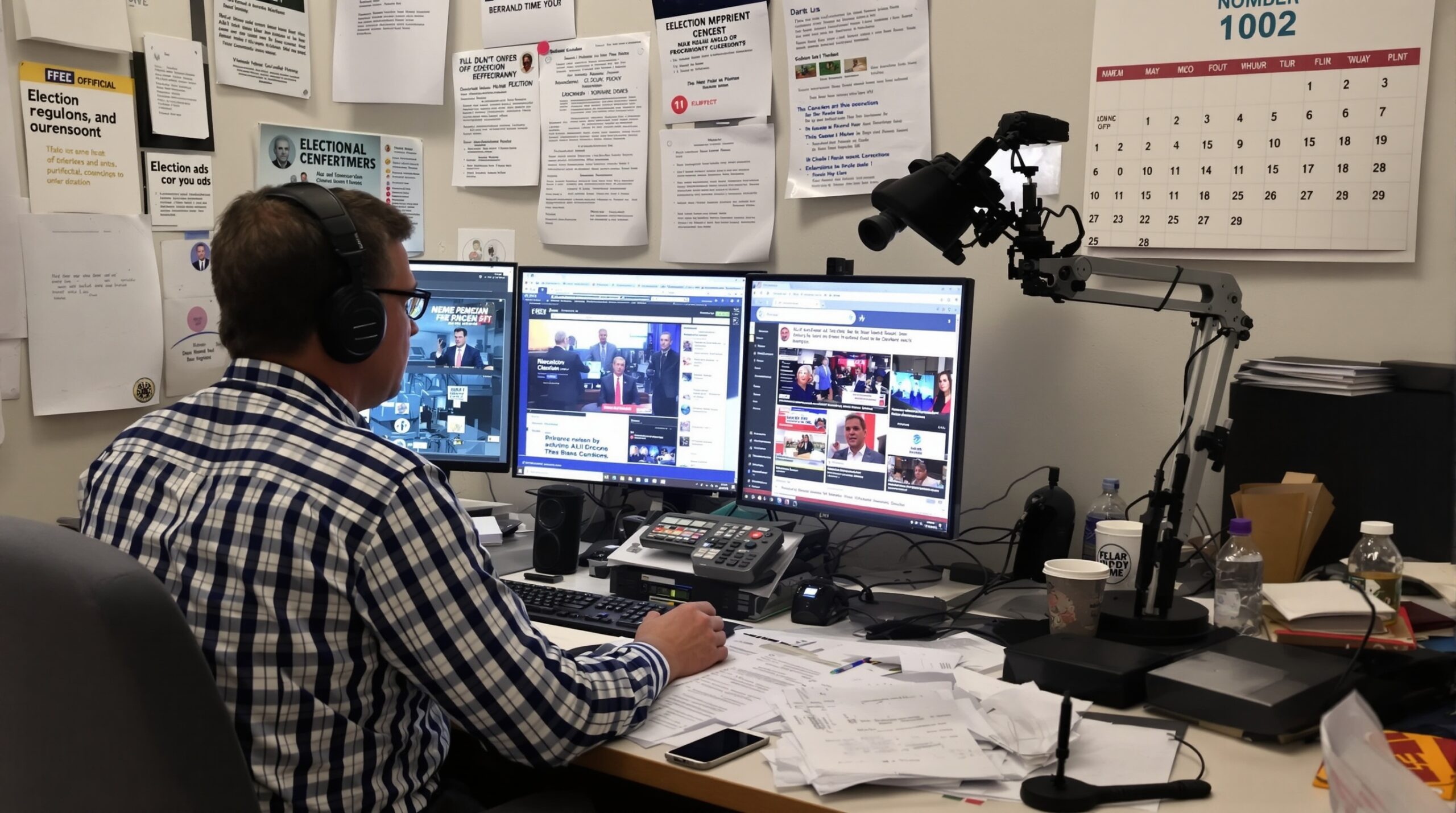Artificial intelligence now plays a significant role in crafting political advertisements. The use of AI-generated content is spreading rapidly across major campaigns. Machines generate realistic voices, faces, and entire ad scripts. This practice promises efficiency and lower costs for political strategists. However, it also raises concerns about ethics, authenticity, and misinformation. Regulators are moving to address these growing threats as election seasons approach.
AI’s Appeal for Political Campaigns
Political marketers embraced artificial intelligence for its speed and adaptability. AI tools can produce tailored messages for different demographics within minutes. Campaign teams use generative AI to simulate candidate speeches or invent digital spokespersons. Such technology allows the creation of hyper-targeted advertisements based on voter data. This lets campaigns reach diverse groups with little extra effort or cost.
Realistic AI voiceovers and images often fool viewers into thinking human actors performed in the ads. Deepfakes and synthetic audio have proliferated on social media platforms. AI ads can flood audiences with personalized messages, amplifying a candidate’s reach. Campaigns that use these technologies gain a competitive edge. Consequently, the rapid expansion has drawn the attention of federal and state regulators.
Concerns over Manipulation and Authenticity
Critics argue that AI-generated ads may blur the line between genuine statements and fabricated content. Deepfake technology can imitate candidate voices or faces with alarming accuracy. This opens the door to spreading false claims and misleading voters about actual events or positions. The possibility of viral fake ads worries democracy advocates and lawmakers alike.
AI-generated ads may feature news anchors or celebrities who never consented to such representations. False endorsements could sway public opinion under false pretenses. These synthetic videos are convincing enough to influence voters’ choices and trust. As a result, regulators worry that AI will accelerate the spread of political disinformation. Authorities now face new challenges in distinguishing between authentic and manipulated campaign communications.
Regulatory Response and New Scrutiny
Regulators have started responding to the challenges brought by AI in political advertising. The Federal Election Commission (FEC) launched hearings to explore rules for AI-generated campaign content. Lawmakers at both state and federal levels are drafting new bills targeting synthetic media in political communication. Some proposals require explicit labeling to identify AI involvement in ads.
Several states, including California and Texas, have introduced or enacted laws to curb malicious deepfake ads during campaigns. The FEC is considering whether to extend its authority to include synthetic audio and video. However, regulatory efforts face technological and legal barriers. Existing legislation may not fully cover the latest advances in generative AI. As a result, regulators must balance innovation with the need to maintain election integrity.
Election Security Risks and Foreign Interference
Security officials warn that AI-generated political ads may facilitate election interference by foreign actors. Nation-states or organized groups could flood platforms with misinformation an unprecedented scale. Synthetic content can appear highly credible, making it difficult for standard security tools to flag it as fake.
Experts point out that hostile countries have used bots and misinformation campaigns before. AI allows a rapid evolution of these tactics through automation and customization. Intelligence agencies urge platforms and government bodies to prepare defenses now, ahead of major global elections. Media outlets have begun scrutinizing AI-generated spots more closely, too. With elections approaching worldwide, the urgency of regulatory intervention has never been higher.
Tech Industry’s Mixed Response
Social media giants and ad agencies are aware of the risks associated with AI-generated political content. Several major platforms announced policies banning certain deepfake ads, especially those targeting elections. They invest in AI-driven detection tools to identify and label manipulated media. However, responsibility for policing content often falls outside their scope.
Tech firms insist they act quickly to remove viral deepfakes once detected. Yet, critics argue these measures remain insufficient. Many platforms struggle to keep up with ever-evolving AI-generated tactics. Some companies lobby against strict regulations, citing free speech and innovation concerns. Others welcome clear guidelines that would foster trust among users and stakeholders. The industry’s response continues to evolve as election scrutiny intensifies.
Calls for Transparency and Clear Labeling
Advocacy groups across the political spectrum urge more transparency in political ad creation. They demand mandatory disclosure when content is generated or altered by AI. Labeling would help voters differentiate between genuine messages and synthetic productions. Transparency provisions could also mitigate the risk of mass deception.
Proponents believe detailed labeling would restore trust in electoral messaging. Civil society organizations suggest standardized tags indicating AI involvement across all platforms and media. Meanwhile, several international bodies consider similar measures for their respective elections. Transparency offers a straightforward solution, but consistent enforcement remains a challenge.
The Path Ahead for Regulators and Campaigns
Policymakers must balance the benefits and risks of AI in political advertising. On one hand, AI offers efficiency and greater reach for campaign engagement. On the other hand, it introduces serious risks to election integrity and public trust. Regulators must adapt quickly to technological shifts and enhance oversight without stifling innovation.
Campaigns face choices about how to integrate AI ethically and transparently. Many are developing internal policies to govern its use responsibly. Clear, enforceable rules, combined with technological solutions, offer the best path forward. Collaboration between government, industry, and civil society is essential to tackle these new challenges.
Conclusion: Preserving Election Integrity in an AI Age
The rapid rise of AI-generated political ads has transformed electioneering around the world. This technology brings both promise and peril for democratic processes. Regulators are under pressure to safeguard elections from synthetic manipulation while respecting innovation and free speech rights.
Expanded scrutiny, clear guidelines, and transparency are critical for preserving trust in democratic institutions. Lawmakers and platforms must work together to address emerging threats posed by AI-generated political ads. As the next election cycle approaches, the actions taken today will shape the future of political communication for years to come.

